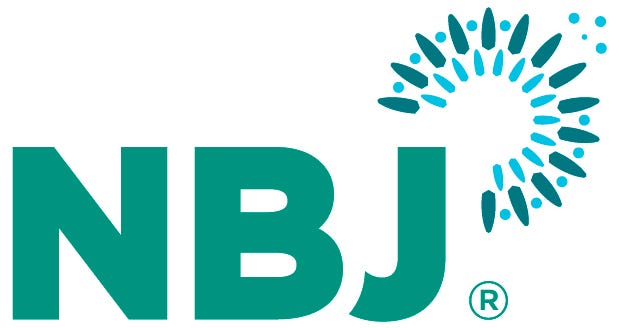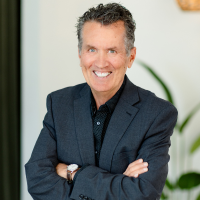
History shows that when the alarm goes off, no industry can afford to hit the snooze button. For companies in the supplement industry—where traditional questions of ingredient efficacy have been replaced with questions of whether or not manufacturers are willfully lying about what ingredients are in their products—those alarms are ringing louder than ever. They may have gone to bed as champions of health and wellness, but they’re waking up as villains. That’s no time to go back to sleep.
A portentous shift is underway, threatening to erase generations of good will that helped grow the industry and lead the grass roots movement that passed DSHEA. An accumulation of negative headlines, culminating with the New York attorney general’s investigation into herbal supplements, has the industry scrambling to hold onto credibility it once took for granted.
Supplement manufacturers face many of the same challenges that the auto industry confronted in the 1960s and ’70s, when car manufacturers fought things as basic as seat belts. Rising public pressure peaked with Ralph Nader’s landmark 1965 book, Unsafe at Any Speed. Within a year, Congress had voted to make seatbelts mandatory and to establish the Department of Transportation. The push from both consumers and the government was for more regulation at every turn.
Yet rather than get ahead of the standards or even try to take the lead, automakers continued to resist them. In 1966, Henry Ford II described safety standards as “unreasonable, arbitrary, and technically unfeasible” and said that they would force Ford out of business. A few years later, Chrysler CEO Lee Iacocca was caught in a secretly taped meeting with President Richard Nixon saying “safety has really killed all our business” and “shoulder harnesses and headrests are a complete waste of money.”
So government took the lead on regulation. In 1970, Congress passed the Highway Safety Act, which established yet another regulatory body in the National Highway Transportation Safety Agency (NHSTA). The 1972 Motor Vehicle Information and Cost Savings Act set standards for consumer information. In 1978, the New Car Assessment Program began rating crash safety on the now-familiar five-star system—third-party testing that told consumers at a glance what manufacturers were selling.
And what happened? Consumers didn’t stop buying cars; they just stopped buying lousy ones. Safety features became a competitive advantage. Ads began to feature crash-test dummies. Window stickers featured star ratings. By 2010, 86 percent of Americans said safety was “very important” in choosing a vehicle, second only to quality/reliability. Most importantly, the rate of traffic fatalities per miles driven is now about 1/3 what it was in the 1960s.
Though automakers still stumble (see: GM ignition switches), consumers and manufacturers alike understand the rules.
When it comes to supplements, many in the public believe there are no rules at all.
While this industry argues that it is regulated and that the existing system is sufficient, it’s important to remember just how easy it is for consumers to walk away. For most people, cars are a necessity, which gave everyone a stake in righting the ship. Supplements enjoy no such status; for most people, they are a lifestyle choice and, thus, much easier to simply walk away from.
When a product is optional, the need for credibility becomes even more imporant. A tipping point on trust may be nearing and the industry will need to work hard, and smart, to make sure consumer trusts tips the right way.
How we got here
The New York Attorney General’s investigation is only the latest blow the industry has absorbed in recent years. In 2013, the Annals of Internal Medicine told consumers to “stop wasting money on vitamin and mineral supplements;” supplement skeptic Paul Offit’s book Do you believe in Magic?: Vitamins, Supplements and All things Natural hit shelves; USA Today’s “Supplement Shell Game” alleged criminal conduct in sports supplements; and Omega-3s were linked to prostate cancer. Then came the 2014 spectacle of Dr. Oz being dressed down by a senate panel for playing fast and loose with the science behind supplements he was recommending.
The industry has long assumed that consumers have a short attention span when it comes to such debates over efficacy, the seemingly weekly flood of conflicting studies all fading into background noise. And indeed, the number of Americans using supplements grew from 62 percent in 2009 to 75 percent in 2014, according to the Natural Marketing Institute. The Council for Responsible Nutrition (CRN) showed consumer confidence in supplements staying fairly constant over that same period and coming in at 83 percent in 2014.
Of course, those numbers are all pre-New York A.G., and there’s reason to worry that the case could be an “Unsafe at Any Speed” turning point. Comedian John Oliver’s 16-minute segment on the Dr. Oz debacle garnered nearly 6 million YouTube views, and the size of the retailers targeted in the New York case—Target, Walmart, Walgreens, and GNC—gave the story extra traction not just with media but with other government officials. Indiana, Connecticut, and Puerto Rico have joined New York in a “coalition” targeting supplements.
While industry trade groups reflexively responded by questioning the DNA bar code techniques the NY A.G. employed, a long-term strategy to grab back credibility has yet to come into focus, though, as interviews with industry leaders make clear, it will certainly involve clarification around testing.
Identified and verified
Ingredient testing looms as both a simple concept and a staggeringly complicated reality. FDA GMPs call for ingredients to be identified using “scientifically valid testing,” but they don’t prescribe the actual testing methods, and they leave specifications for identity, purity, strength, and adulteration to the manufacturers.
The myriad combinations of testing protocols and supplement ingredients make it very difficult to have a cohesive, airtight testing strategy. But that’s a losing argument in the face of skeptics who charge that the industry just creates its own specs and protocols.
“Dry labbing” makes things even worse. It is well known that some laboratories will issue a certificate of analysis without testing the product. (Dateline NBC aired an expose in 2012.) But even in legitimate labs, standards and technology are constantly evolving. Flora Research Labs Director James Kababick compares testing technology to Moore’s Law—the assumption in the computer industry that processing capability doubles every two years. “With mass spec(tometry) we are seeing an increase in sensitivity by an order of magnitude every so many years,” Kababick says. “My new mass spec can do things my old mass spec couldn’t hit on at all.”
There’s also the human element. Even the right equipment is useless if it’s aimed at the wrong thing. Kababick and others also complain about testing companies that keeping techniques and even known adulterants secret, which holds back the development of industry best practices.
The American Botanical Council is trying to change that, one ingredient at a time. The Adulteration Program, a global effort supported by trade organizations and research groups around the world, seeks to define both the problems and the tests to detect them. So far they have completed reports on five ingredients, all available for free on the ABC website, all heavily footnoted and peer reviewed. Though the report on skullcap included 23 testing methods, ABC founder and director Mark Blumenthal says, “Probably only three or four are really fit to detect adulteration.”
So out of 23 tests that companies might use to verify skullcap supplements, only three or four are up to par. That, says Blumenthal, is why the proprietary testing methods must end. “As the adulteration landscapes shifts, the analytical methods need to keep up.”
NOW Foods tries to keep all of its testing out in the open with a “World Class Labs” section on its website, with links to more than 20 additional pages explaining the measures it takes to ensure quality. Elan Sudberg, CEO at Alkemist labs, says that though he buys NOW Foods, those 20 web links are not enough. If the testing is being done, he says, the information can be shared, right down to the lot number for every ingredient from every batch in every bottle. “You have a product, and on the back of the product, you have a scan code that takes you to certificate of analysis for that material,” Sudberg says, of his ideal scenario. It’s not a scientific challenge. It’s an information-management challenge.
But both Kababeck and Sudberg agree that explaining every test in detail to the average consumer is plainly impossible. The goal, they say, isn’t to do the testing and let it speak for itself but, rather, do the testing and tell a story that lets the consumer know they can trust it. The average car buyer may not understand the physics of crash testing, but they understand five-star ratings and trust that the people behind those ratings know what they’re doing.
From the lab to the aisle
Regardless of what story the industry settles on (assuming it can come up with a cohesive approach), regaining public trust will take a long time. Reporters like dirt, and the New York investigation provided a very large pile. The USA Today series won a National Press Club award. And that was after years of stories that have included, but are by no means limited to: liver toxicity being associated with black cohosh adulteration, deaths connected to the Craze sports supplement, the ephedra ban, tainted supplements derailing the careers of Olympic athletes, and hepatitis cases tied to OxyElite Pro.
The industry can say it is regulated and that the allegations from the New York attorney general, even if true, are violations of GMPs mandated by the FDA. Trade groups and lawyers can tell stories of how the FDA has failed to act when they have been informed about shady players. Supplement makers can point to an auditing system established by the Natural Products Association more than a decade before GMPs went into effect. CRN can share an FDA warning letters database.
And the media will just jump on all of that as further evidence that the existing system has failed. And they’d be right. In fact, in terms of public perception, that failure to police the industry—regardless of whose fault it is—is really the only consistent story the industry has right now.
Steve Fink, a “crisis PR” specialist and author of Crisis Management: Planning for the Inevitable, says the industry needs a Good Housekeeping-style seal and a slogan that provides confidence at a glance. “Doing it one company at time is counter-productive,” he says. “I think you do it for the entire industry, and each company can take that message and do what it will.”
Without the right story and branding, he says, no amount of testing and diligence will matter: “In the pitch of battle between perception and reality, perception always wins.”
Moving ahead
Last summer at the Dr. Oz hearing, CRN President Steve Mister told the senators “a tale of two industries,” an oft-repeated description of a few bad players soiling the market for the responsible companies. Others in the industry have said the ratio is reversed, with a few good players competing against a much larger number of cheats. Regardless, everyone agrees the bad players need to taken out. It’s how to go about that where consensus falls apart.
The Omega-3 Coalition provides an example of what could happen if the industry came together more effectively. In 2013, omega-3s took a double-barrel blast, with one study questioning the cardiovascular benefits and another linking omega-3 blood levels to prostate cancer. Sales immediately slumped by more than 10 percent.
In response, omega-3 giant DSM led the charge to create a coalition that undertook consumer research and developed a marketing plan for the entire category, much like the Dairy Council’s “Got Milk” campaign. One of the coalition’s most interesting finding from its consumer research was that bad news doesn’t necessarily have a lasting effect; most consumers said they didn’t remember the two studies. It was the lack of good news that mattered more. “The decline in sales was really driven by consumers forgetting about omegas,” says GOED Executive Director Adam Ismail, who helped coordinate the campaign. “They just needed that reminder.”
The Omega-3 coalition tested its “Omega-3s: Always a Good Idea” campaign in Charlotte, North Carolina, via classic channels like billboards and print ads. Sales went up by 5.8 percent during the one-month trial period, and the effect has persisted. The campaign rolls out nationally this spring. It was not inexpensive—the Coalition has raised $6 million so far—but Ismail calls it an investment, not a cost.
For supplements, messaging is less simple. Omega-3s are a single category where trust in the purity has not been a big issue and where, unlike with supplements, there wasn’t a big perception of wrongdoing that needed to be addressed.
Whatever the message, the supplements industry needs to look like it’s welcoming—if not begging for—more enforcement. And the industry has to cast off the bad players. No one will believe things are being cleaned up if they don’t get to see some of the dirt. Fink says the industry could get rid of unsavory practices without naming names if it successfully implemented a Good Houskeeping-type seal program. “The companies that didn’t subscribe to the program, that didn’t smack the seal on the front of their product, would stand out by the absence of that seal,” he says.
The lack of a mark might also draw out plaintiff’s attorneys who could effectively provide the enforcement the FDA never had the mandate or resources to do.
What might qualify a company for such a seal is already being discussed. In December, Underwriters Laboratories and the NPA announced a “verified ingredients mark” program. UL ClearView, as the program will be called, will begin with a B2B system that will allow retailers, manufacturers, and suppliers to share information clearly and transparently. All of the data on testing and supply-chain verification for every ingredient will be available online, to address the information management challenge Sudberg describes. “It will help a retailer know what are the highest quality products available now and how can they get them on their shelves,” says Michael O’Hara, UL’s general manager for nutraceuticals. The first retail participants will be announced in the spring of 2015.
ClearView will evolve, O’Hara says, into a consumer-facing program. Consumers want that information and confidence, he says, pointing to research UL did developing the program. “Approximately three out of four folks said that would positively affect their buying decisions,” O’Hara says. “Just under 70 percent are willing to pay a premium, as well.” The UL seal is most often associated with lamps, TVs, and other electronics but O’Hara believes the near-universal recognition will cross over easily.
When it comes to GMPs, the National Safety Foundation probably has better recognition within the industry than with consumers, but Lisa Thomas, NSF’s general manager for dietary supplements and sports nutrition, says the foundation may be most effective inside that community anyway, especially as the industry has gone international. A partnership with the Global Retailers and Manufacturers Alliance announced in November could help end the barrage of negative headlines like those seen out of New York by alerting manufacturers and retailers to bad ingredients. The problem in supplements, Thomas explains, really begins at the start of the supply chain, primarily China and India. NSF expanded its China staff from ten to 50 in the past five years; 25 of those new hires happened within the past last year.
The problems are complex, but that doesn’t mean they can’t be corrected, Thomas says. “If it was unfixable, I wouldn’t have a job right now.”
The bottom line
Whatever happens with third-party certification, the testing must be rigorous and beyond reproach, says Jeff Nedelman, a specialist in proactive media at Strategic Communications who has worked with food supplement companies. The industry needs to look like it is leading reform, not fighting it.
Nedleman worked in Wisconsin Senator Gaylord Nelson’s office in the 1970s, when the auto industry was resisting regulation. “They fought seat belts,” he says. “They fought clean air, and they fought mileage efficiency at the height of the oil embargo.”
Automakers were so strident in their resistance to regulation that they effectively created the regulation they opposed, Nedelman explains. The supplement industry could end up doing the same thing if it is not consistently staying ahead of the story by calling out the bad ingredients and the risky ways those ingredients are being used. No industry can be an adversary to a public health risk, real or not, says Nedelman. “I talk to the national health media all the time,” Nedelman says. “And every time I am on the phone with health reporters, they think the industry is just pure crap.”
Wait too long to change that perception and additional regulation is nearly inevitable, he says. “Politicians get elected on this stuff.”
The auto industry may be an inexact parallel, but the lesson American auto executives learned is one the supplement industry has to hear. Change proved both inevitable and marketable. “Ford is making everything that Ford executives adamantly fought to the death against,” Nedelman says. But that change came at gunpoint—and at a huge cost for companies that resisted the most. Japanese automakers showed the Big Three that safety was a marketable feature, and took away countless billions in the process.
American executives didn’t become enlightened, Nedelman says. “They went bankrupt.”
About the Author(s)
You May Also Like





